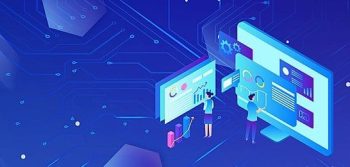
Zoom has released its latest report on artificial intelligence (AI) in the workplace. After surveying how more than 11,000 employees and leaders across eight global market. Commissioned by Zoom and conducted by Morning Consult, the report sought to uncover how leaders and employees are spending their time at work, and whether their most time-consuming tasks could be aided by AI.
Modern distributed teams are always looking for ways to increase productivity while boosting effective communication. But much of collaboration involves time-consuming tasks like sending meeting summaries and updates or organising information. These mundane tasks can inadvertently create a higher productivity toll. But having AI to automate or aid in certain tasks could help teams solve this collaboration paradox.
“Distributed workforces aren’t new. Businesses have been supporting global workforces for a long time,” said Ricky Kapur, Head of Asia Pacific at Zoom. “Today, we have a new tool in our arsenal to help us support modern collaboration by streamlining workflows, automating or assisting with rote tasks, and more. This means that teams, whether employees or leaders, can focus their time and efforts on more impactful activities like creative ideation or decision-making to help increase output, drive revenue, and ultimately result in meaningful business impact.”
Across Asia Pacific (APAC) respondents (Australia, Japan, Singapore), 70% of employees agreed that they had more to gain than lose from using AI at work, the highest percentage across regions. Meanwhile, 73% of APAC leaders said they were favourable towards AI.
Saving Time Is a Top Benefit of AI
When employees and leaders were asked to identify which benefits of using AI at work were the most helpful, top responses were related to saving time—whether by reducing the number of repetitive tasks, completing work faster, or using that time for something else.
- 94% of Singapore employees identified having fewer repetitive tasks and more time to focus on other things as top benefits of AI.
- 91% of Singapore leaders identified fewer repetitive tasks as a benefit of AI, along with completing work faster.
Close to half of leaders in Singapore whose teams use AI at work also saw other benefits, including having a happier team (49%) and making better decisions (48%).
There Is a Difference in Opinion Nonetheless
While employees and leaders may agree that saving time is a great benefit, they differ on how exactly they want AI to help them with their workday. Singapore employees are more interested in using AI tools for efficiency and automation, while leaders here want to use them for assistance during and after their meetings.
Singapore employees prefer to use AI to:
- Automate repetitive tasks (46%).
- Get real-time help during meetings (41%).
- Summarise meetings, chat messages, and notes (41%).
Meanwhile, Singapore leaders prefer using AI to:
- Get real-time help during meetings (39%).
- Have better sound and video quality during meetings (36%).
- Draft emails and chat messages (35%).
Companies May Be Holding Their Own Teams Back
Among those who said they do not use AI at work, 56% of Singapore employees said it is because their company as a whole does not utilise it. Of those who do use AI at work, 59% say their company provides AI tools—which also means that the other 41% need to be self-motivated to seek out these tools.
Yet, key barriers to adoption cited by Singapore leaders put employees in the driver’s seat. As much as 80% of leaders said that their teams were resistant to using new tools. Meanwhile, 80% also highlighted that their teams were used to working a certain way, the highest across the eight markets surveyed.
“APAC stands out in our survey as the region most bullish on AI, yet there remain blockers within organisations that prevent teams from enjoying the productivity and collaboration boosts from incorporating AI into their workstreams. The clear disconnect between leaders’ perceptions of and employees’ attitudes toward AI must be addressed before their teams can fully unlock the true business value of AI,” added Kapur.
 (0)
(0) (0)
(0)Archive
- October 2024(44)
- September 2024(94)
- August 2024(100)
- July 2024(99)
- June 2024(126)
- May 2024(155)
- April 2024(123)
- March 2024(112)
- February 2024(109)
- January 2024(95)
- December 2023(56)
- November 2023(86)
- October 2023(97)
- September 2023(89)
- August 2023(101)
- July 2023(104)
- June 2023(113)
- May 2023(103)
- April 2023(93)
- March 2023(129)
- February 2023(77)
- January 2023(91)
- December 2022(90)
- November 2022(125)
- October 2022(117)
- September 2022(137)
- August 2022(119)
- July 2022(99)
- June 2022(128)
- May 2022(112)
- April 2022(108)
- March 2022(121)
- February 2022(93)
- January 2022(110)
- December 2021(92)
- November 2021(107)
- October 2021(101)
- September 2021(81)
- August 2021(74)
- July 2021(78)
- June 2021(92)
- May 2021(67)
- April 2021(79)
- March 2021(79)
- February 2021(58)
- January 2021(55)
- December 2020(56)
- November 2020(59)
- October 2020(78)
- September 2020(72)
- August 2020(64)
- July 2020(71)
- June 2020(74)
- May 2020(50)
- April 2020(71)
- March 2020(71)
- February 2020(58)
- January 2020(62)
- December 2019(57)
- November 2019(64)
- October 2019(25)
- September 2019(24)
- August 2019(14)
- July 2019(23)
- June 2019(54)
- May 2019(82)
- April 2019(76)
- March 2019(71)
- February 2019(67)
- January 2019(75)
- December 2018(44)
- November 2018(47)
- October 2018(74)
- September 2018(54)
- August 2018(61)
- July 2018(72)
- June 2018(62)
- May 2018(62)
- April 2018(73)
- March 2018(76)
- February 2018(8)
- January 2018(7)
- December 2017(6)
- November 2017(8)
- October 2017(3)
- September 2017(4)
- August 2017(4)
- July 2017(2)
- June 2017(5)
- May 2017(6)
- April 2017(11)
- March 2017(8)
- February 2017(16)
- January 2017(10)
- December 2016(12)
- November 2016(20)
- October 2016(7)
- September 2016(102)
- August 2016(168)
- July 2016(141)
- June 2016(149)
- May 2016(117)
- April 2016(59)
- March 2016(85)
- February 2016(153)
- December 2015(150)
